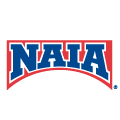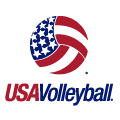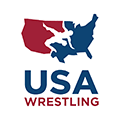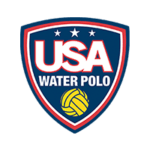How to Become a College Cheerleader and Get Recruited for Cheer

The cheerleading recruiting process looks a little different than other sports because it isn’t a sanctioned NCAA sport, meaning there are no established regulations around coach contact or recruiting calendars. Therefore, coaches and recruits can communicate and express interest at any time. While most cheerleading coaches turn their attention to juniors and seniors, there are steps student-athletes can take throughout all high school years to become a college cheerleader.
Most importantly, athletes need to stay proactive and not wait for coaches to find them. This guide answers common questions about how to become a college cheerleader and also provides tips on managing the recruiting process.
Quick Links
How to cheer in college: Making the transition from high school to college cheerleading
Sometimes recruiting can feel so overwhelming that many families don’t know where to start. Even though it isn’t a clear-cut linear process, there are many steps student-athletes can take to identify the best cheer schools and proactively market themselves to get on a coach’s radar. For families wondering how to cheer in college, here a few crucial steps athletes should take:
- Research cheer colleges and create a target list: Make a list of the top priorities and ask important questions that will shape your college experience. For example, does competing matter to you, and if so, UCA or NCA? How intense do you want the training to be? Also think about the school’s academics, size, location, game-day atmosphere, campus life and cost. Once you narrow down your athletic, academic and personal preferences, you can start to create a realistic list of target schools. But before you add them to the list, make sure that your skills align with the coach’s desired qualifications. You can learn this by visiting the team’s website, reviewing the roster and watching video of their routines.
- Contact college coaches: Because cheerleading isn’t a sanctioned NCAA sport, there are no established recruiting rules or calendar. Therefore, coaches and student-athletes can contact each other any time, and athletes can even visit the school and meet with the coach in-person. If you want to get on a coach’s radar, it’s incredibly important to email them early, detailing an overview of your skills, grades and interest in the program. Plus, if you have a recruiting video, you should send it to them. Coaches will provide feedback about whether you should continue to try out for their team.
- Attend college cheer clinics: College cheer clinics are essential for athletes interested in trying out for a college team. Some clinics kick off in the fall, but many occur shortly before the official tryout in the spring. During this time, recruits learn the material they will perform and be judged on during the tryout.
- Excel academically: Every college coach looks to recruit student-athletes who will have a successful transition to college. Recruits with good grades and a solid academic history show coaches that they can manage their time well and be accountable.
- Get a feel for the tryout format: College cheer programs have different tryout formats. First, you should visit the school’s website, as most provide an overview of their process and list of qualifications needed. Some schools may require that you first submit a video of certain skills as a prerequisite of their tryout. Be sure to practice these skills ahead of time, so you’re prepared when the time comes.
How cheerleaders get recruited to compete in college
College cheerleading recruiting doesn’t follow the lead of other NCAA college sports. Because it’s not an NCAA sanctioned sport, there aren’t recruiting rules or calendars in place. Therefore, college coaches and student-athletes can interact at any time. That means recruits can visit campus, attend clinics and communicate with coaches during all points of the recruiting process. That’s why it’s important to get in front of coaches at schools you’re interested in by attending their clinics or open gyms. It’s even more helpful to secure an online evaluation first, so you should send a recruiting video to the college coach via email and update them about your progress as you develop throughout high school.
Generally, most college cheerleaders get recruited by attending clinics hosted by the college, emailing a recruiting video and participating in high-level club cheerleading team competitions, like All-Star and Team USA. While many recruits cheer on their high school team, most college coaches don’t evaluate them at these events.
The bottom line: Recruits need to be proactive and reach out to college coaches at schools that are a good fit for them. Getting an online evaluation is a first step, but securing an in-person evaluation before tryouts is the key to getting recruited.
College cheer tryouts: How do you try out for college cheerleading?
To make a college cheerleading team, almost all college coaches require recruits to participate in tryouts, which are typically held in the spring. But the tryout process can be different at every school. Top competitive cheerleading colleges usually hold tryouts by invitation. Other schools require student-athletes to first attend invitationals or open gyms before trying out, so the coach can scout prospects to narrow down their list. Many schools ask recruits to send in a video before giving them the opportunity to tryout. Then, of course, there are some schools that simply have open tryouts.
One of the best ways to better understand each college’s cheer tryout process is to first attend their college clinic. Most clinics are held in the fall and spring for juniors and seniors, and during this time, coaches cover what skills are needed during tryouts, traditions, game day cheer and the fight song. If a recruit is serious about a program, they absolutely need to attend a clinic before official tryouts in the spring.
Another way to improve your chances of making the squad is to visit the college team’s website, see what qualifications are needed, study the tryout format and email the coach ahead of time to get on their radar.
What do coaches usually look for in cheerleading tryouts?
How to prepare for cheerleading tryouts will largely depend on the requirements for each specific program. Overall, Cheerleading tryouts typically include:
- Sideline cheers
- Fight song
- Tumbling (running and standing)
- Jumps and stunts
But each’s school specific list of skills required at tryouts really depends on how competitive the program is.
For example, elite teams require a standing back tuck or other advanced standing tumbling, such as back handspring back tuck, standing full, or a back handspring back tuck or full. Running tumbling skills completed at tryouts at elite programs might include a layout or full, running passes and specialty passes. Additionally, all coaches ask recruits to perform jump combinations and game-day stunts, such as a liberty or stretch. Then, of course, recruits must nail the fight song and cheer, as well as other sideline cheers. Lastly, many coaches want to analyze a recruit’s overall appearance at tryouts, so they provide apparel and gameday hair and makeup guidelines.
How to make a college recruiting video for cheerleading
Some college coaches require that recruits complete an online recruiting video with specific skills at the start of their tryout process. Plus, recruiting videos can help student-athletes secure an online evaluation with other coaches who may not have seen them otherwise. As a recruit’s skills develop, they can update their video and re-send it to coaches to stay top of mind. Here are a few tips to help you create your video:
- First, visit the college’s athletic website to see if there are video guidelines posted. Many coaches, especially at top competitive programs, provide a step-by-step process of how the video should be created and what it should include.
- Otherwise, provide competition and practice footage that showcases your top skills in tumbling, stunts and jumps.
- Plus, for each school, you want to perform the fight song and cheer and common game-day stunts.
- Generally, you want to shoot everything from the front except tumbling. Tumbling clips should be shown from the side, if possible.
- It’s best to perform stunting and tumbling skills on a dead floor or cheer floor.
- For safety reasons, ask a teammate to spot for stunts, if possible.
- Don’t zoom in and out and use a tripod for stability.
- Include a title page or a short introduction that includes your name, graduation year, hometown/high school and relevant experience a coach would want to know (high-level All-Star Cheer).
See a complete list of cheerleading video guidelines.
How good do you have to be to cheer in college?
There truly isn’t one defined answer for how good you have to be to cheer in college. Each coach has their own set of desired qualifications, depending on how competitive their program is and what their roster needs are. Even within the same division level, you can find two programs with vastly different qualifications, some requiring elite skills and others focusing on core fundamentals. Generally, top competitive programs across the country attract high-level All-Star cheerleaders with advanced tumbling and stunting skills.
Additionally, most college cheerleaders have mastered basic tumbling skills, jumps, stunts and cheers. Coaches bring on recruits with a solid technique in running and standing tumbling, flexibility and sharpness in cheer jumps, strength and clean lines in one-leg, two-leg and body position stunts, as well as combinations. Plus, overall appeal during cheers is at the top of every coach’s list. College cheerleaders need to have proper motion technique and sharp movements, while being able to raise up a crowd.
The best way to discover how good you have to be to cheer in college is to gain insight into that specific coach’s recruiting needs and standards. You can see a complete list of college cheerleading requirements here. You can also visit a college roster to study the athletes’ competitive backgrounds, watch competition footage and see the tryout qualifications (if any) to better understand what that particular coach is looking for.
Research schools and create a target list
As tedious as it may sound, you can’t overlook the importance of research in the recruiting journey. This is especially true for college cheer, where teams greatly differ. Even within the same division level, you can have two cheerleading programs that provide vastly different experiences. Here are the most important factors to keep in mind as you create a realistic target list of colleges:
- Athletic preferences: Recruits need to ask several questions to narrow down the type of cheerleading experience they would be successful in. For example, do you want an intense game-day atmosphere that a large school provides? Are you interested in being on a spirit squad or competing? If competing, do you want to be in the UCA, which follows more traditional cheer, or NCA, which closely mirrors All-Star cheer? And do you prefer all-girl or co-ed squads? Once a student-athlete has a better understanding of where they would thrive, they can begin to look at schools and the desired cheerleading requirements within each program. The college’s athlete roster can provide insight into the type of qualifications needed as well.
- Academics: Visit the school’s website to see the average grades and test scores. Then look at which majors are offered to make sure the school has the courses you want to take.
- Cost: Cheerleading scholarships can be hard to come by, so it’s important to factor in the school’s total cost, in addition to the amount of aid you would receive. Schools may also offer financial packages that include need-based aid, grants and academic scholarships, depending on the student-athlete’s academic history.
To get a head start, view the complete list of colleges that offer cheerleading
How to contact a college cheer coach
College cheerleading isn’t a sanctioned NCAA sport, meaning there are no official recruiting rules or calendars. Coaches and student-athletes can contact each other at any time to express their interest. As a cheer recruit, it’s important to use this to your advantage and proactively reach out to college coaches. Here are a few key steps to take to get on a coach’s radar:
- Send an introductory email: An introductory email can help establish a relationship with a coach and secure an initial evaluation. When first reaching out to a college coach, it’s important to express your personal interest in the program and provide details they’re interested in, such as your contact information, graduation year, accolades, cheerleading experience and academic information. Most importantly, your email should include a recruiting video that highlights your best skills in each position you perform.
- Call coaches. Cheerleading coaches get several emails per day, so there’s always a chance your initial message may have been skipped over. It’s important to follow up with a phone call, especially in college cheerleading, since coaches and student-athletes can speak over the phone at any time. This is also a great opportunity to loop in your club coach, who can help facilitate contact with college coaches.
- Follow up. Never think of contacting college coaches as a one and done situation. Coaches are busy, and you might be catching them at the wrong time. Plus, their recruiting needs may change over time, or they may become more interested in a recruit after they’ve seen their athletic skills develop. Whenever you have a noteworthy update to share, like an updated recruiting video or newly-achieved skills, email the college coach again to touch base. Doing so helps keep you top of mind.
Learn more about contacting college coaches.
Manage your cheerleading recruiting process
Inevitably there are ups and downs in the cheerleading recruiting process. At one point, it may seem as though a lot is happening, like when coaches are actively responding or when you’re attending camps and clinics. But other times, you may feel stuck in a holding pattern. During these moments, you’re actually in the maintenance part of your recruiting process. Don’t worry, there are plenty of ways to keep moving when you reach this point:
- Update your recruiting video with newly-accomplished skills or recent competition footage. Then send the video college coaches to re-connect once again.
- Update your NCSA profile with new video, skills information, an updated transcript or personal statement. That way, when coaches search for your profile, they’ll see an accurate snapshot of who you currently are as a student-athlete.
- Continue to update your target list of schools. As you learn more about cheer colleges and discover which coaches show interest in you as a recruit (and those who don’t), you can update your target list.
- Research college rosters and watch college cheer competitions. Do a little investigating to see firsthand what it takes to be a college-athlete at each school and see how you align compared to the current roster.
- Stay on top of your academics. Coaches want to recruit student-athletes who are successful in the classroom and manage their time well.
- Double check important deadlines. Make sure you know all the deadlines for your Free Application for Federal Student Aid (FAFSA), your college applications and all tryouts.
What’s your coach’s role in the recruiting process?
Club and high school coaches can be extremely valuable in the recruiting process. They help support student-athletes during their recruiting journeys and can even facilitate connections with cheer coaches. Many college coaches turn to All-Star gyms or similar club cheerleading teams, such as Pop Warner, to learn more about their top recruits. Here’s how club and high school coaches come in handy:
- Find the right college fit: Most coaches have a good understanding of the college landscape. Use their knowledge and expertise to find cheerleading programs that match your athletic needs and personal interest.
- Connect with college coaches: Because cheerleading isn’t a sanctioned NCAA sport, there are no recruiting rules or calendars to follow. That means recruits and coaches can contact each other any time. Your club coach can help make these connections. They may even already have connections with certain programs that can help get your name on a coach’s radar.
- Character reference: College coaches in every sport want to learn as much as they can about their list of top recruits, including their leadership qualities, attitude and character. They often turn to the recruit’s current coach for guidance.
- Video help: Don’t hesitate to ask your coach for help when creating your recruiting video. They may have competition footage already available for you to use. Plus, they’ve probably created recruiting videos for other student-athletes and can provide pointers. View our tips for creating a cheerleading recruiting video.
















